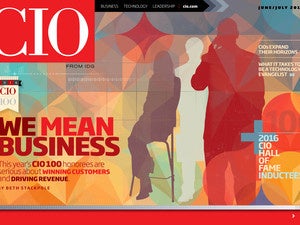معیارهای مقایسه دیتاسنتر
What are some data center measurements and benchmarks and where can I find them?
PUE (Power Usage Effectiveness): Created by members of the Green Grid, PUE is a metric used to determine a data center’s energy efficiency. A data center’s PUE is arrived at by dividing the amount of power entering it by the power used to run the computer infrastructure within it. Expressed as a ratio, with efficiency improving as the ratio approaches 1, data center PUE typically range from about 1.3 (good) to 3.0 (bad), with an average of 2.5 (not so good).
DCiE (Data Center Infrastructure Efficiency): Created by members of the Green Grid, DCiE is another metric used to determine the energy efficiency of a data center, and it is the reciprocal of PUE. It is expressed as a percentage and is calculated by dividing IT equipment power by total facility power. Efficiency improves as the DCiE approaches 100%. A data center’s DCiE typically ranges from about 33% (bad) to 77% (good), with an average DCiE of 40% (not so good).
LEED Certified: Developed by the U.S. Green Building Council (USGBC), LEED is an internationally recognized green building certification system. It provides third-party verification that a building or community was designed and built using strategies aimed at improving performance across all the metrics that matter most: energy savings, water efficiency, CO2 emission reduction, the quality of the indoor environment, the stewardship of resources and the sensitivity to their impact on the general environment. For more information on LEED, go to www.usgbc.org.
he Green Grid: A not-for-profit global consortium of companies, government agencies and educational institutions dedicated to advancing energy efficiency in data centers and business computing ecosystems. The Green Grid does not endorse vendor-specific products or solutions, and instead seeks to provide industry-wide recommendations on best practices, metrics and technologies that will improve overall data center energy efficiencies. For more on the Green Grid, go to www.thegreengrid.org.
Telecommunications Industry Association (TIA): TIA is the leading trade association representing the global information and communications technology (ICT) industries. It helps develop standards, gives ICT a voice in government, provides market intelligence, certification and promotes business opportunities and world-wide environmental regulatory compliance. With support from its 600 members, TIA enhances the business environment for companies involved in telecommunications, broadband, mobile wireless, information technology, networks, cable, satellite, unified communications, emergency communications and the greening of technology. TIA is accredited by ANSI.
TIA-942: Published in 2005, the Telecommunications Infrastructure Standards for Data Centers was the first standard to specifically address data center infrastructure and was intended to be used by data center designers early in the building development process. TIA-942 covers:
• Site space and layout
• Cabling infrastructure
• Tiered reliability
• Environmental considerations
Tiered Reliability — The TIA-942 standard for tiered reliability has been adopted by ANSI based on its usefulness in evaluating the general redundancy and availability of a data center design.
Tier 1 Basic — no redundant components (N): 99.671% availability
• Susceptible to disruptions from planned and unplanned activity
• Single path for power and cooling
• Must be shut down completely to perform preventive maintenance
• Annual downtime of 28.8 hours
Tier 2 — Redundant Components (limited N+1): 99.741% availability
• Less susceptible to disruptions from planned and unplanned activity
• Single path for power and cooling includes redundant components (N+1)
• Includes raised floor, UPS and generator
• Annual downtime of 22.0 hours
Tier 3 — Concurrently Maintainable (N+1): 99.982% availability
• Enables planned activity (such as scheduled preventative maintenance) without disrupting computer hardware operation (unplanned events can still cause disruption)
• Multiple power and cooling paths (one active path), redundant components (N+1)
• Annual downtime of 1.6 hours
Tier 4 — Fault Tolerant (2N+1): 99.995% availability
• Planned activity will not disrupt critical operations and can sustain at least one worst-case unplanned event with no critical load impact
• Multiple active power and cooling paths
• Annual downtime of 0.4 hours
Due to the doubling of infrastructure (and space) over Tier 3 facilities, a Tier 4 facility will cost significantly more to build and operate. Consequently, many organizations prefer to operate at the more economical Tier 3 level as it strikes a reasonable balance between CAPEX, OPEX and availability.
Uptime Institute: This is a for profit organization formed to achieve consistency in the data center industry. The Uptime Institute provides education, publications, consulting, research, and stages conferences for the enterprise data center industry. The Uptime Institute is one example of a company that has adopted the TIA-942 tier rating standard as a framework for formal data center certification. However, it is important to remember that a data center does not need to be certified by the Uptime Institute in order to be compliant with TIA-942.
- What is a data center?
- How are data centers managed?
- What is a green data center?
- What are some top stakeholder concerns about data centers?
- What options are available when I’m running out of power, space or cooling?
- What are some data center measurements and benchmarks and where can I find them?
- Is the federal government involved in data centers?
- What should I consider when moving my data center?
- What data center technologies should I be aware of?
